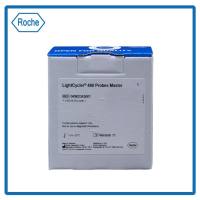The functional unit of the peripheral nervous system (PNS) is the neuron, with its long axon enveloped either by Schwann cells
(unmyelinated axons) or by the multilamellar myelin sheath formed and maintained by these cells (myelinated axons) (Fig. 1
A
). Neuronal cell bodies may be located within the CNS (e.g., motor neurons in the ventral horn of the spinal cord) or within
the PNS itself (e.g., sensory neurons in the dorsal root ganglia), but in either case, bundles of long axons course through
various peripheral nerves to their target tissues (Fig. 1
B
). Normal operation of the PNS depends on the integrity of both neurons and glial (Schwann) cells. Additionally, however,
function is critically dependent on intricate interactions between these two cell types at molecular, structural, and functional
levels. As an example, the intimate structural relationship between large axons and the myelin sheath that surrounds them
is an absolute requirement for the rapid and efficient “saltatory conuction” of nervous impulses (
1
,
2
). Damage or insult to either the neuronal or glial component of this functional unit affects the other component, and most
often has deleterious effects on normal nervous system function. In some cases, damage may be so severe that it is readily
apparent as gross functional or morphological alterations, but in many cases the initial insult, although eventually leading
to serious pathological consequences, may be subtle and difficult to detect. In recent years, it has become possible to utilize
molecular biological approaches as rapid and sensitive probes for neurotoxic insults.
Fig. 1.
(A)
The neuron-Schwann cell functional unit of the peripheral nervous system. The functional integrity of the PNS depends on
both the neuron and its ensheathing Schwann cells (which may or may not produce a myelin sheath), as well as on vital interactions
between these two components. The axon is actually several orders of magnitude longer (in relation to its cell body) than
is shown in the diagram, and each axon branches into numerous nerve endings.
(B)
Generalized diagram of the peripheral nervous system. The peripheral nervous system contains both myelinated and unmyelinated
axons. Unmyelinated axons are also enveloped by Schwann cells (not shown in the figure). Neuronal cell bodies from which PNS
axons arise are located in either the dorsal root ganglia (sensory neurons) or in the ventral horn of the spinal cord (motor
neurons). Sympathetic ganglia with their associated neurons, also part of the peripheral nervous system, are not shown. The
sciatic nerve is an easily accessible, major component of the peripheral nervous system.






